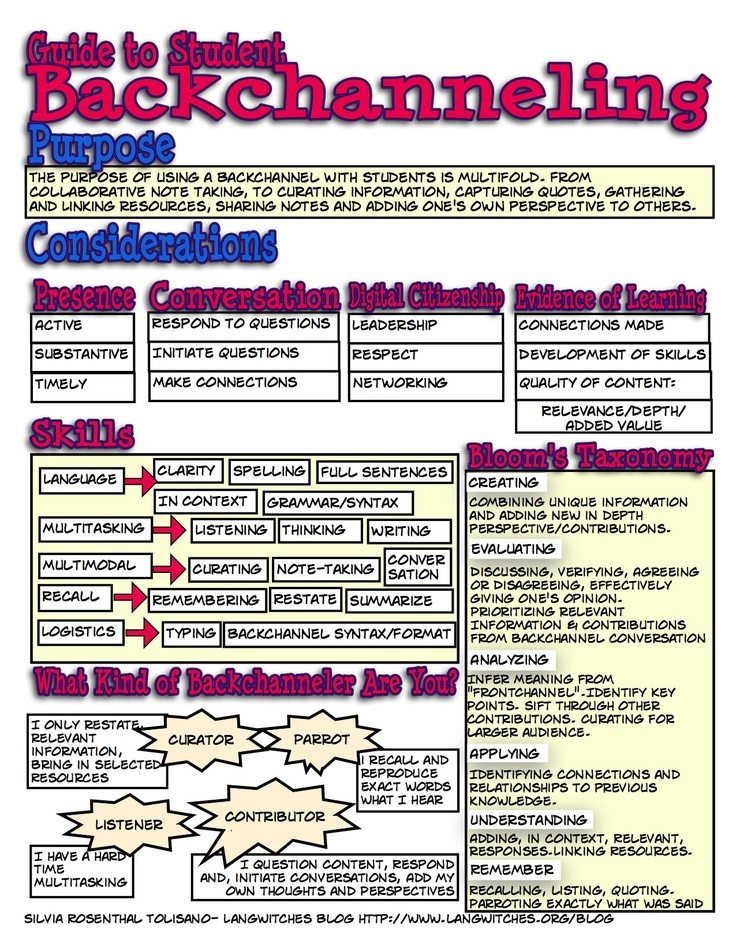Student Backchanneling: A Definition
by TeachThought Staff
Student Backchanneling is the digital hosting of background conversations by students during learning.
These sorts of conversations are held on sites like chatzy (which has mobile capability), and add an immediate layer of complexity and interactivity to any existing activity. This kind of flexibility makes it easy to try in any content area, and most grade levels.
While the traditional response to ‘background chatter’ is to mute it with ‘classroom management,’ if that ‘chatter’ can be supported by recording, sharing, and curating, it has powerful potential beyond any that ‘quiet’ might bring Students can quietly clarify misconceptions during a lecture, video, or group activity–and this process of socializing thinking can have significant long-term effects on the climate of the classroom. They can also brainstorm possibilities, take collaborative notes, and share insights..
We’ll get into exactly what this might look like in your classroom soon, but below, Silvia Rosenthal at the excellent langwitches blog put together the following visual guide for student backchanneling, including its purpose (e.g., sharing information and perspective), what it promotes (e.g., evidence of learning), and even includes a sidebar clarifying how Bloom’s taxonomy can function as a framework for student backchanneling and related discussions.
In short, Backchanneling allows students to use collaborative note-taking, ask questions, share notes, and more in real-time without ‘disturbing’ the class.
The Definition Of Student Backchanneling
